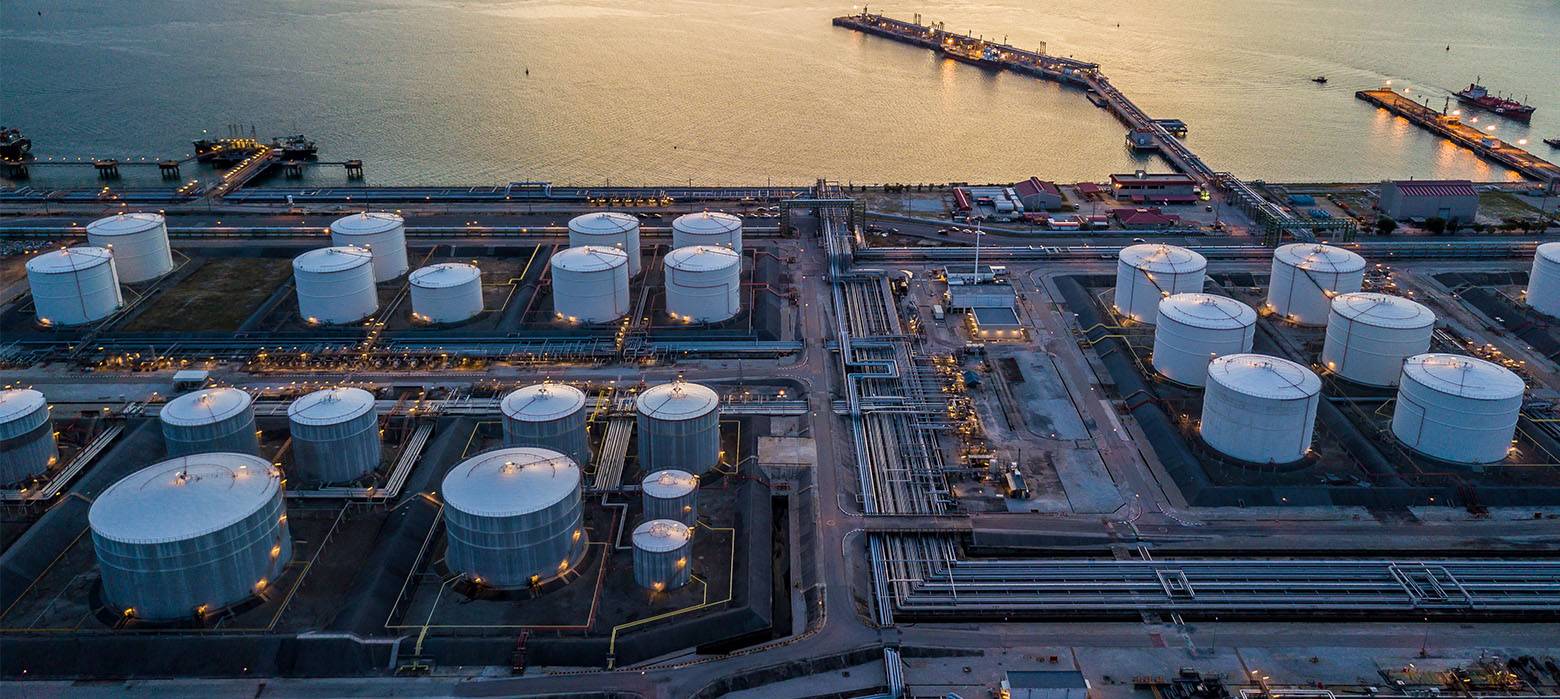
- admin
- May 18, 2020
Crude Oil Storage Tanks: A Detailed Guide (Updated for 2020)
Crude oil tanks are storage units used to store untreated/ unrefined oil to transport it to other locations or for processing into finished products.
How’s Crude Oil Stored?
Fixed Roof Tank and Floating Roof Tank are the two widely used crude oil storage tanks used in the United States. Let’s delve deep into each to know how its stored –
1. Fixed Roof Storage :-
These crude oil tanks are the most common storage units for oil. While storing, hydrocarbons such as liquids, volatile organic compounds, hazardous air pollutants, and some inert gases vaporize and collect between the liquid level and the fixed roof tanks.
As the liquid level in the tank changes, the gases are slowly released into the atmosphere. An easy way to prevent this is to install vapor recovery units. Using foam chambers is another potential solution. These help cover flammable hydrocarbon or water-miscible liquids having low expansion foam or fire extinguishment.
The foam occupies the vacant space that initially had air. Experts believe that these prevent hazards as it directs all the foam onto the flammable liquid surface, irrespective of the weather condition.
2. Floating Roof Tanks :-
Floating roof tanks are a better option compared to fixed roof tanks as it helps prevent vapor emissions. According to experts, the chances of fire or an internal tank explosion are also less in floating roof tanks.
They further add that these crude oil tanks are the best option for storing stable liquids, with dynamic loads near to nil. However, adverse environmental conditions affect floating roofs as an accumulation of snow and rainwater may result in roof submersing in the stored liquid.
An area of concern with floating roof oil tanks is the dynamic loads that act upon the roof due to the constant splashing of water lead to flooding of roof compartments. This, however, can be corrected by having sufficient stiffness in the circumferential direction near the roof.
Also, when the liquid exits the bank, the floating liquid slowly approaches the bottom leaving behind liquid droplets. This results in the evaporation of liquid droplets in the atmosphere.
How Long Crude Oil can be Stored?
Storing crude oil in above-ground storage tanks is a costly affair as it often tends to lose their viscosity. According to Reuters, a time period ranging between 30 days to 6 months is optimal for storing crude. Beyond this period, chances for the oil to lose its viscosity is high.
How Do You Clean a Crude Oil Tank?
Prolonged oil storage in a crude oil tank often leads to the accumulation of sludge at the bottom of the container. So, it’s essential to remove the sludge periodically.
Here’s you can clean a crude oil tank –
1. Replace the old sludge-tainted oil tank with a new one.
2. Use heating oil additive as sludge dispersants or softening agents.
3. Now, unclog the lines. The use of additives stirs up sludge from the tank bottom and clog oil lines and filters.
4. Next, remove the sludge and clean the tank thoroughly.
To avoid issues from the accumulation of sludge, ensure to clean your oil tank every three years.
So, here was our complete guide on oil storage tanks. Let us know in the comment section if we’ve missed out on something important.
- crude oil storage tanks
- Industrial tanks
- oil storage tanks
Category
- Above Ground Fuel Tanks
- Above Ground Gas Storage Tank
- Above Ground Storage Tanks
- Above Ground Water Storage Tanks
- Agricultural Tanks
- Chemical storage Tanks
- Diesel Fuel Storage Tanks
- Diesel Storage Tanks
- Exernal FloatingRoof Tanks
- Farm Water Tank
- Fiberglass Oil Tanks
- Fiberglass Septic Tanks
- Fiberglass Tanks
- Fiberglass Underground Fuel Storage Tanks
- Field Erected Tanks
- Floating Roof Tank
- Food and Beverage Tanks
- Fuel tank
- Industrial Chemical Storage Tanks
- Industrial Gas Tanks
- Industrial Plastic Tanks
- Industrial Storage Tanks
- Industrial Tank heating pads
- industrial tanks
- Natural gas
- Natural gas vs Propane
- oil storage tank
- Oil Storage Tanks
- Peracitic Acid
- Petroleum Tanks
- Residential gasoline storage tanks
- Residential Water Storage Tanks
- Sodium Hydroxide Storage Requirements
- Sodium Hypochlorite Storage Tanks
- Steel Storage Tanks
- storage tank failure prevention
- Storage Tanks
- Sulfuric Acid Tanks
- Uncategorized
- UnderGround Storage Tanks
- Waste water tank
- Water Storage Tanks

 Tank Size Calculator
Tank Size Calculator






